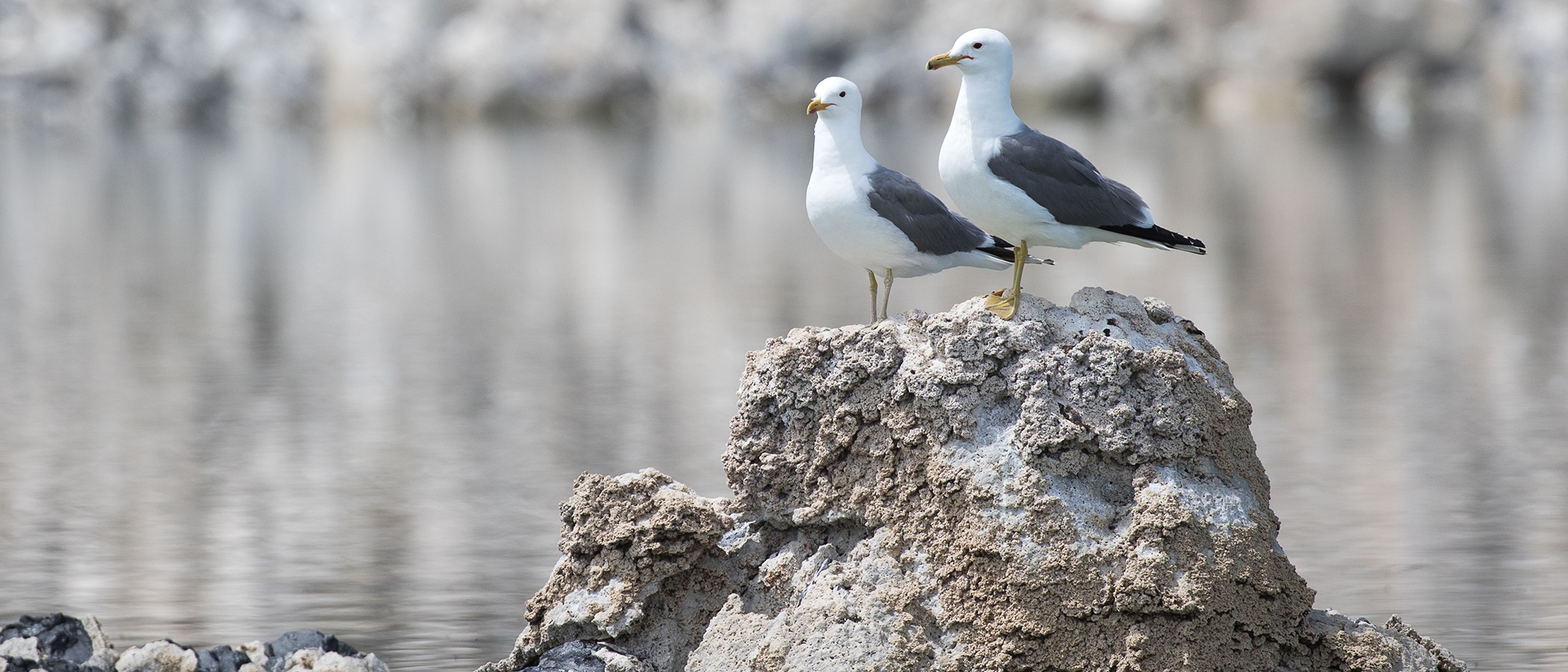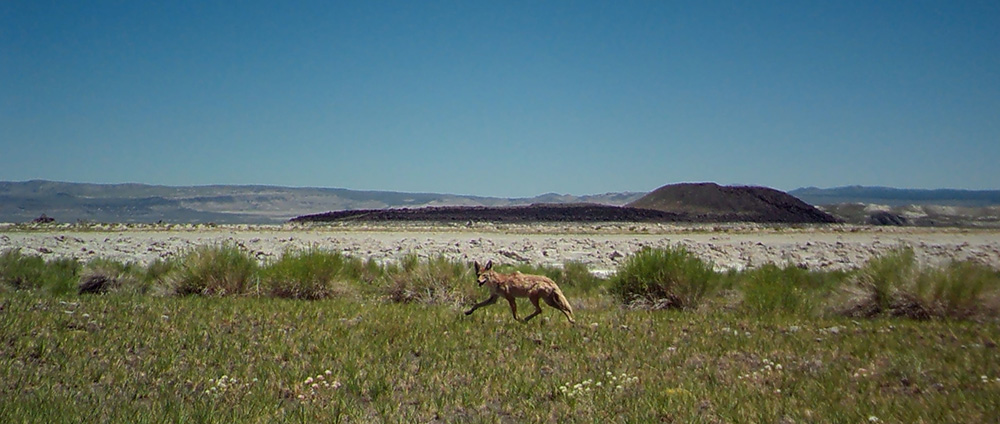
California’s drought has lowered Mono Lake to the point at which the nation’s second largest California Gull rookery, home to 50,000 nesting birds, is in danger. The shrinking moat of water between Negit Island and the lake’s north shore could soon prove inadequate in deterring predators like coyotes.

While it appears that Mono Lake will stay just barely high enough to provide protection during the 2016 nesting season, the lake level forecast places it half a foot below that same threshold at the start of the 2017 nesting season.
As a result, management discussions have progressed from contingency planning to the actual logistics of how to efficiently construct a temporary fence as a coyote barrier in the months ahead. Efforts could wait until early 2017, which would allow time to see how the 2016–17 winter develops, since a notably wet winter could still alleviate the need for a fence. However, constructing a fence on a remote patch of exposed lakebed is enough of a challenging project; doing it in the middle of next winter’s cold and windy conditions only adds to the challenge. So options for installation in summer or fall 2016, when access is easier and fence crews are more available, are also under consideration.
No one really knows the minds of Mono Basin coyotes, so acting sooner rather than later has another benefit: The primary value of a fence is to deter coyotes from reaching the nesting grounds and learning that they are a plentiful food resource. If coyotes have that motivation, a fence will be much less effective in providing protection. There are no guarantees of what will happen as the lake hovers at these low levels and an adventurous coyote could always decide to take an exploratory swim.
The Mono Lake Committee and California State Parks, in consultation with the Department of Fish & Wildlife, developed details for a protective fence over the last nine months. The current design is for a multi-strand, solar powered electric fence, similar to those used with livestock on ranches. Fence strands would be lowered for the fall and winter to avoid obstructing wildlife outside the nesting season. The fence will be temporary and fully removable when the lake rises several feet above the threshold of concern.
California State Parks will be the lead agency for the fence project, with the Committee serving as a major partner by providing funding for materials and coordination of volunteer support. State Parks has completed an environmental review, which helped guide careful thinking about routing and construction methods. Mono Lake’s protected status means that multiple permits are required for the project, from agencies like the California Department of Fish & Wildlife, Army Corps of Engineers, and Lahontan Regional Water Quality Control Board; those are all underway. Working closely with adjacent land managers at the US Forest Service is also critical.
Concern for the safety of the nesting islands has existed since the earliest days of the Mono Lake Committee, as the lake was five feet lower at that time and the landbridge was extensive. Back then the primary concern was for the survival of the eggs and unfledged (flightless) chicks. This concern of course remains prominent, but there is also another—research has shown that the effects of a single summer of predation extend far longer.
California Gulls have been unexpectedly slow to recolonize safe island habitat that was once predated, even after the lake has risen. The concern now is that one year’s predation could potentially change established nesting patterns for decades, driving California Gulls to less secure habitats, often where they are less desired.
Ultimately, wet winters will raise Mono Lake and restore the watery nesting island protection the gulls depend on. Until then we plan to lend a helping hand to mitigate the unfortunate problems that come with Mono Lake being so low.
This post was also published as an article in the Summer 2016 Mono Lake Newsletter (page 5). Top photo courtesy of Point Blue Conservation Science.

We really need Los Angeles to back off and not take ANY water until this crisis is over. Too many lawns are being watered….